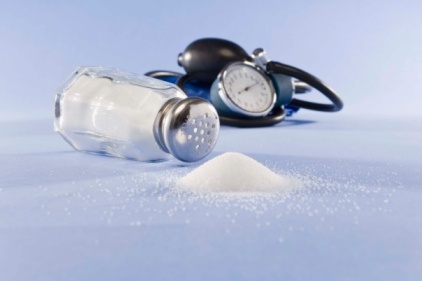Want to cut back on salt? Use herbs and spices instead
But being trained how to do it is even better

 With excessive sodium intake the culprit in health problems ranging from hypertension to osteoporosis and kidney disorders, health experts are in agreement that Americans should reduce the amount of salt they consume.
With excessive sodium intake the culprit in health problems ranging from hypertension to osteoporosis and kidney disorders, health experts are in agreement that Americans should reduce the amount of salt they consume.
Just how to do that is challenging, given the abundance of salty snacks and high-sodium commercially prepared foods that are commonplace in our diets.
It turns out that teaching people how to flavor food with spices and herbs instead of salt can work quite well - according to research presented at the American Heart Association’s Epidemiology & Prevention/Nutrition, Physical Activity & Metabolism Scientific Sessions 2014.
In the first phase of the study, 55 volunteers ate a low-sodium diet for four weeks. Researchers provided all foods and calorie-containing drinks. Salt is the main source of sodium in food.
In the second phase, half of the study volunteers participated in a 20-week behavioral intervention aimed at reducing their sodium intake to 1,500 mg/day by using spices and herbs. The other half reduced sodium on their own.
More than 60 percent of the participants in the study had high blood pressure, 18 percent had diabetes and they were overweight.
The researchers found:
In the first phase, sodium intake decreased from an average 3,450 mg/day to an average 1,656 mg/day.
In the second phase, sodium intake increased in both groups. But those who received the behavioral intervention consumed an average 966 mg/day of sodium less than the group that didn’t receive the intervention.
“People in the intervention group learned problem-solving strategies, use of herbs and spices in recipes, how culture influences spice choices, how to monitor diet, overcoming the barriers to making dietary changes, how to choose and order foods when eating out and how to make low-sodium intake permanent,” said Cheryl A. M. Anderson, Ph.D., M.P.H., lead author of the study and associate professor in the Department of Family and Preventive Medicine at the University of California San Diego.
Those assigned to the behavioral intervention group had cooking demonstrations and had a chance to share how they were changing traditional recipes to remove salt and include spices. The researchers didn’t emphasize specific spices, and encouraged participants to try different things to find out what they liked most.
“Salt is abundant in the food supply and the average sodium level for Americans is very high — much higher than what is recommended for healthy living,” Anderson said. “We studied the use of a behavioral intervention where people learn how to use spices and herbs and less salt in their daily lives.”
“Given the challenges of lowering salt in the American diet, we need a public health approach aimed at making it possible for consumers to adhere to an eating pattern with less salt. This intervention using education and tasty alternatives to sodium could be one solution.”
Co-authors are Laura K. Cobb, M.S.; Edgar R. Miller, M.D., Ph.D.; Mark Woodward, Ph.D.; Alex Chang, M.D., M.S.; Morgana Mongraw-Chaffin, Ph.D.; and Lawrence J. Appel, M.D., M.P.H. Disclosures are on the abstract.
The McCormick Science Institute funded the study.
Looking for a reprint of this article?
From high-res PDFs to custom plaques, order your copy today!






